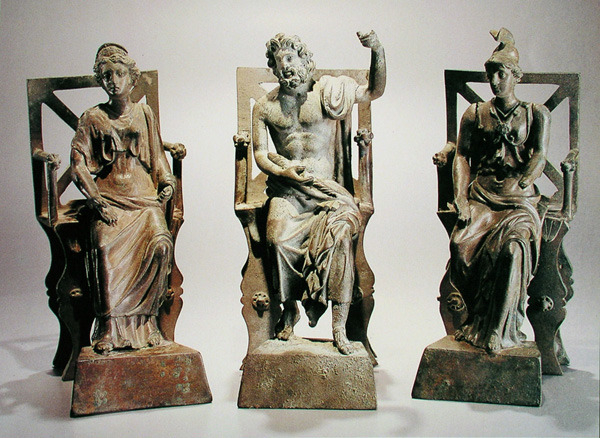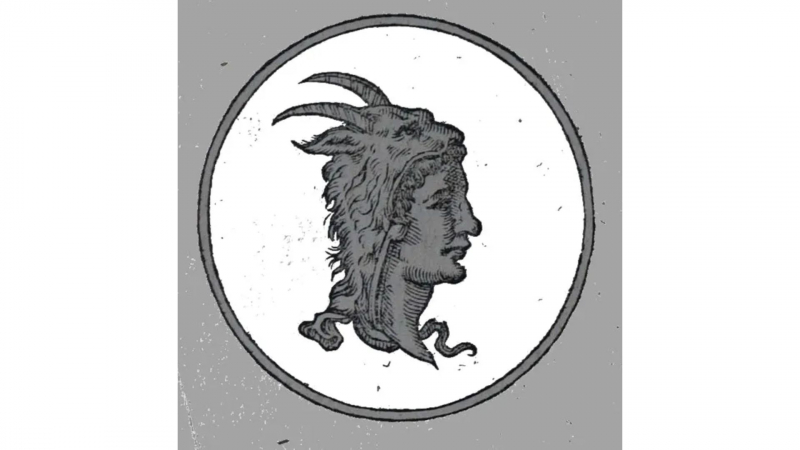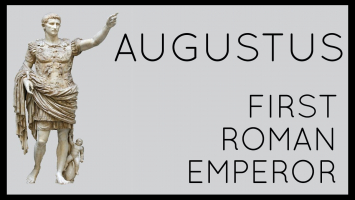Top 6 Facts About Roman Goddess Juno
Juno was an ancient Roman goddess, the state's defender and special advisor. Hera, the goddesses' ruler in Greek mythology, was compared to her. She was ... read more...frequently depicted with a sword and cloak made of goatskin. The traditional representation of this combative feature was influenced by the Greek goddess Athena, who carried an aegis made of goatskin. A diadem was also displayed on Juno. Some following facts about Roman Goddess Juno will help you know more about her.
-
The first fact about Roman Goddess Juno is that she is the Goddess of Childbirth, Marriage and Patron of the state. The most well-known Roman goddess, Juno, was connected to many facets of existence. She was revered as the patron goddess of the state and the goddess of childbirth, marriage, youth, and family. Along with the Roman state and other deities, she was responsible for maintaining the privacy of the Roman people. It was once believed that the name Juno was related to Love (Jove), who was originally known as Diuno and Diove from *Diovona. A derivation from the Latin word iuven-, which means "youth," was put out at the start of the 20th century. It involved the syncopated form in-, which stands both "heifer" and "younger." Georg Wissowa's support for this etymology helped it gain widespread acceptance. Iuvare, which means "to help, benefit," and iuvenescere, which means "rejuvenate," are two ancient etymologies that connected Juno's name to the renewal of the new and waxing moon, possibly implying the idea of a moon goddess.
The moon goddess, who represents a celestial body that waxes and wanes, was the other aspect of her relationship. She even inspired the naming of the month of June. It was the couple's favorite month because it ensured that any couple getting married in this month will have a happy and fulfilling marriage for the rest of their lives. Women in particular adored her before beginning new jobs or life paths in ancient Rome. When they reached adulthood, they would begin a purification process under the guidance of the Juno Sororia (sisterhood).

Photo: Timeless Myths 
Photo: Journeying to the Goddess -
One of the more complicated and contentious topics in Roman religion is Juno's theology. Even more than other significant Roman deities, Juno was known by a variety of names that each represented different facets and functions of the goddess. For instance, Pronuba and Cinxia ("she who loses the bride's girdle") were crucial to her position as a goddess of marriage. Other Juno aphorisms, however, have more general meanings and are not as thematically connected.
Goddess Juno was revered for a number of reasons, and her name was also derived from that. She was referred to as Juno Regina since she was the Queen of the Gods, for example. She would defend the state as the ruler of the Roman state under the title Regina. She would announce danger as Juno Moneta or Juno the Warner and get ready to confront it. With the aid of the goddess Juno as Moneta, the Romans were successful in many battles.
She would help the poor as Juno Sospita or Juno the Savior. She earned the title after caring for her devotees, shielding them from harm, and rescuing them in all guises. She would focus on assisting women and children. As Juno, the midwife, she would supervise a birth and assist the woman and the unborn child throughout the course of the pregnancy and labor. As Junot Lucina or Juno, who delivers light, she would assist in bringing illumination, life, and enlightenment to anyone who prayed to her.

Photo: Wikipedia 
Photo: Wikipedia -
In ancient religion, each deity had a special sacred symbol that was dedicated to them; nevertheless, the symbols of the equivalents were identical. She typically carries a spear and a shield while donning a goatskin coat with a golden headpiece called a polos. The peacock, cuckoo, lion, cow, cypress, pomegranate,lotus and lily were among the sacred symbols of Goddess Juno. Her Greek and Etruscan contemporaries used these symbols as their sacred emblems as well. Each sign connected to her stood for something. For instance, cuckoo symbolized the ideal marriage, while pomegranate denoted fertility.
Every sign was also sacred to her for a certain reason. For instance, the peacock became her spiritual animal after it came to her and asked for a beautiful voice, and Lily was precious to her because she became pregnant after only touching it once. However, when taken as a whole, all the symbols represented power, queenly qualities, marital love, and procreation
Flowers and more fruits represented the beauty of life that she could offer her worshipers. That's all about the third fact about Roman Goddess Juno we want to mention.

Photo: The Magickal Pen 
Photo: Pinterest -
One of the Capitoline Triad's three gods, together with Jupiter and Minerva, was Juno. On Capitoline Hill, there was a magnificent temple where these three gods were revered. They were the most revered gods in pre-Roman Rome. Juno's spouse and brother, Jupiter, was the ruler of the gods. He served as the head deity of the Roman official religion and was connected to the sky, thunder, and the ruler of the gods.
The goddess of knowledge, legality, triumph, and combat was Minerva, the son of Jupiter. The trio of Tinia, Uni, and Menrva was inspired by the Etruscan triad. The group was odd since there were more women than men in it, which was uncommon in ancient times. The name Juno Capitolia was given to her, and countless temples were erected on hills in her honor. The temples were referred to as Capitolium, which is Latin for "temples of the Capitoline Triad."
Pausanias X 5, 1-2, which describes the v in Phocis, is the only ancient source to record the existence of this heavenly trinity in Greece. The Capitoline Triad presents challenging interpretive issues. Given that there is no solid evidence of its existence elsewhere, including in Latium or Etruria, it appears oddly Roman. It is conceivable that the Greeks had a direct impact, but it would also make sense to think of it as a native invention. Dumézil put up the theory that the Tarquins may have created it ideologically to combat the rise of new Latin nationalism because it had the three deities that are Troy's adversaries in the Iliad.

Photo: Ancient Origins 
Photo: honor to the gods -
The following fact about Roman Goddess Juno is that Matronalia was a well-known ancient celebration. All of Juno's festivals took place on the kalendae of a month, with the exception of two or perhaps three: the Nonae Caprotinae in July and the Festival of Juno Capitolina on September 13, whose dates were set by Jupiter's preeminence. It's possible that a second Juno Moneta festival took place on October 10, possibly the day when her shrine was dedicated. This information illustrates how closely the goddess is linked to the start of each lunar month.
Two significant celebrations were held in honor of Goddess Juno. The Matronalia, also called Matonales Feriae, was the main one. The exact date was used to worship at the dedicated temples. It was observed annually on March 1. This celebration was respected because it celebrated the rebirth of nature in the spring, the tranquility following the marriage of the Sabine Women, and the holiness of marriage. Women would march to the temple, offer lambs and oxen as sacrifices, and pray for contented marital lives. Single women would pray for a devoted husband.
On the occasion of Matronalia, husbands were expected to give their wives gifts. Some claim that the celebration was created in memory of Mars, the son of Juno. Some claim that the occasion was a celebration of the end of the Roman-Sabine War, in which women played a significant role. According to legend, the women intervened between the groups to end the conflict.

Photo: History Ten 
Photo: Wikipedia -
Goddess Juno was linked to a number of gods. Jupiter, the supreme God, was one of the primary deities. The two were divine couples, and one of the first theories in Latin religion is their connection. The oldest Latin theology has a connection between Juno and Jupiter. Praeneste provides a look into the old Latin mythology: the local goddess Fortuna is depicted as nursing two children, Jove (Jupiter) and Juno, a boy and a girl. They were known as Jupiter and Juno. It would appear safe to conclude that they have always been known by their own proper names and that they have retained them throughout history. The oldest deities in every Latin town were these ones.
A similar significant connection existed between Juno and Janus. The two gods' function at the beginning of each month's kalendae is to preside over the new moon's emergence. Janus and Juno work together to oversee the transition from one month to the next, with the second assisting it with the force of her energy. A sacrifice to Janus was offered by the rex sacrorum and the pontifex minor in the curia Calabra, while one to Juno was offered by the regina sacrorum at the Regia. Originally, when the month was still lunar, the pontifex minor had the responsibility of announcing the advent of the new moon. Their connection illustrates the bond between the goddess of beginnings and transition and the female sovereign deity. It was most noticeable during the Tigillum Sororium Festival on October 1. Janus was in charge of guarding all of the passages connected to motion and time, as well as the portals of Heaven and Earth.
The Penates, Genius, and Hercules are some of the other associations that Juno has.

Photo: Encyclopedia Britannica 
Photo: Gnostic Warrior



























